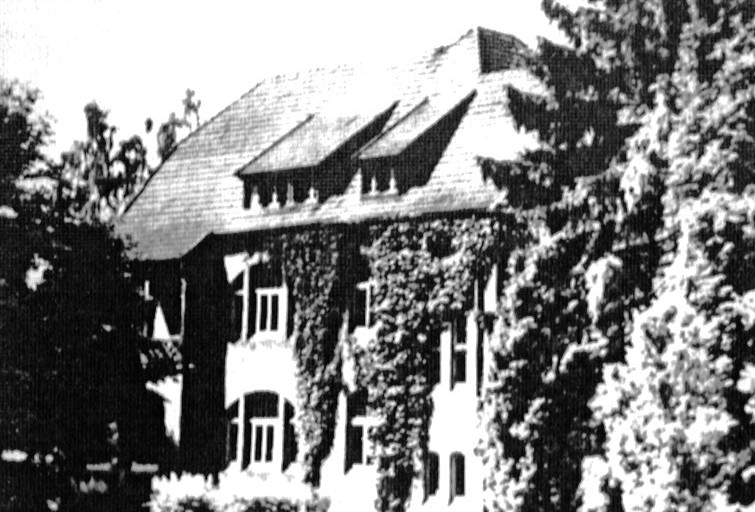
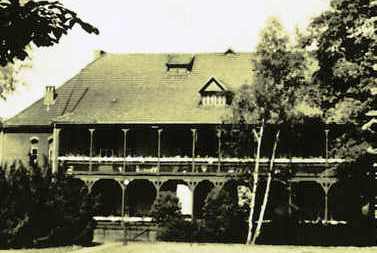
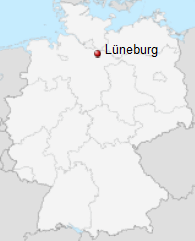
 |
 |
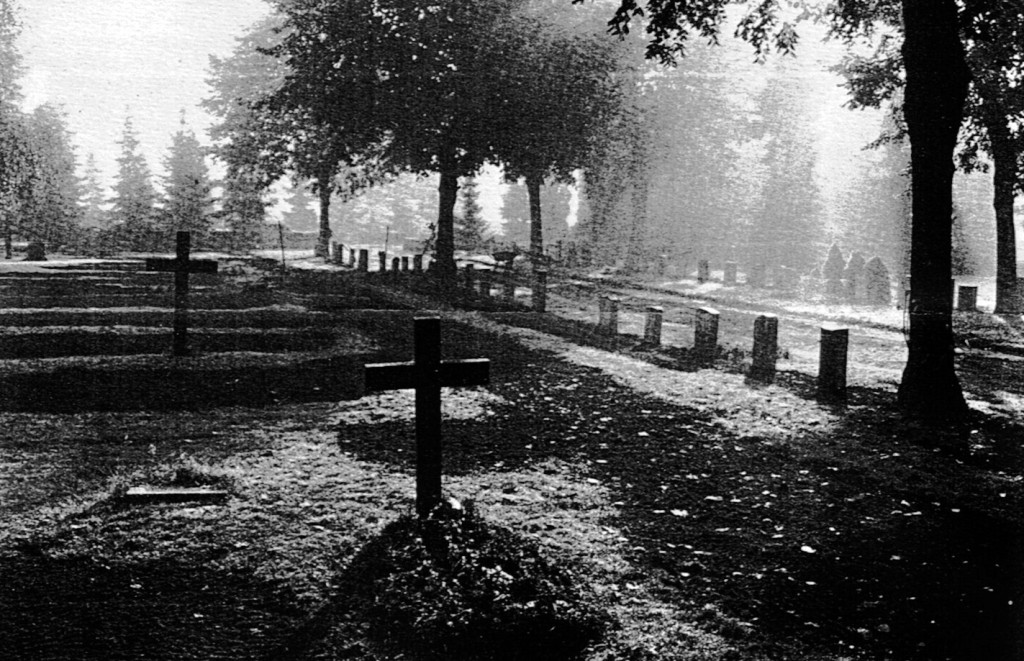 |
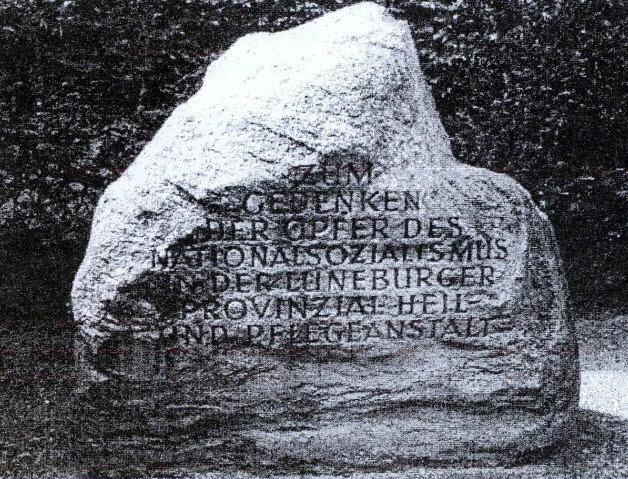 |
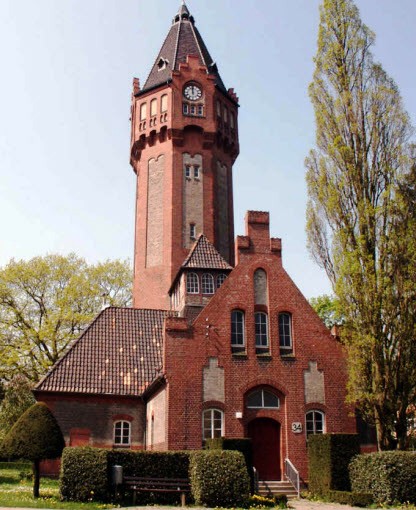 Source: Reiter 2009, p. 1
Source: Reiter 2009, p. 1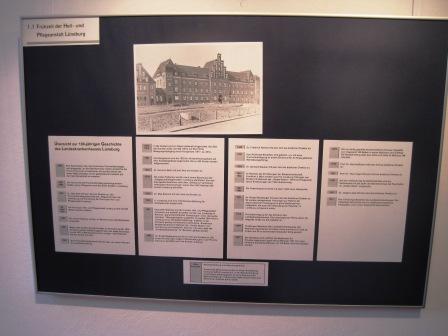 |
1.
Before 1933 1.1 Beginnings of the facility Lüneburg Provides an overview of the entire history of the facility |
|
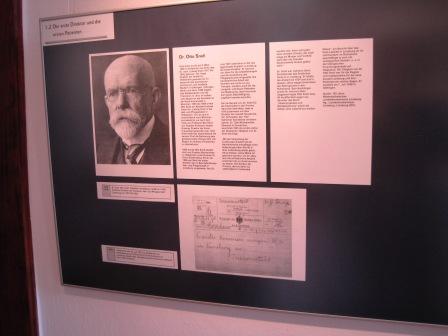 |
1.2 First director and patients Addresses the biography of Dr. Snell and shows a postcard annoucing the impeding arrival of patients |
|
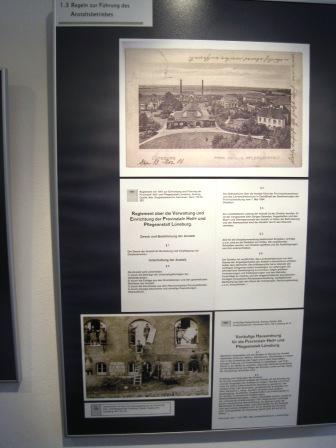 |
1.3 Rules of operation Presents the administrative charges of the facility and the rules of the house |
|
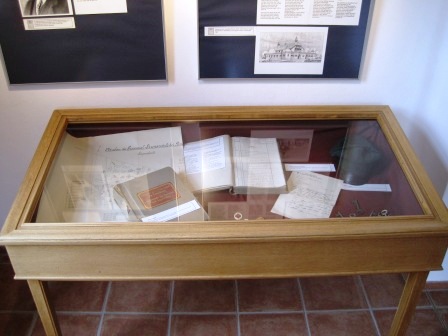 |
1.4 Historical map |
|
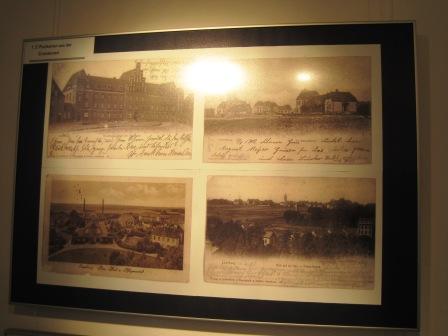 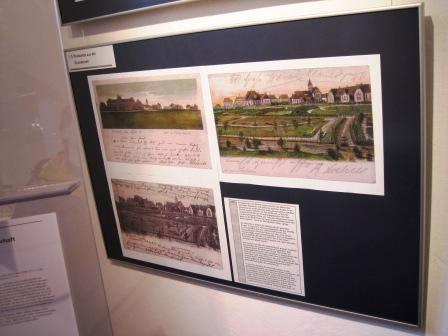 |
1.5 Postcards from early times |
|
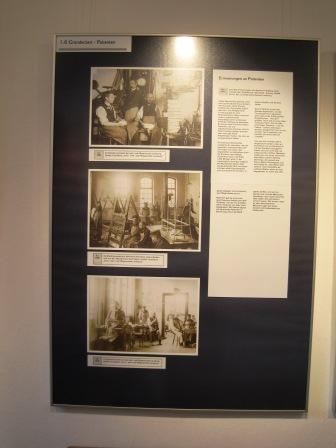 |
1.6 Early patients Addresses life of the patients and the typical activities at the facility |
|
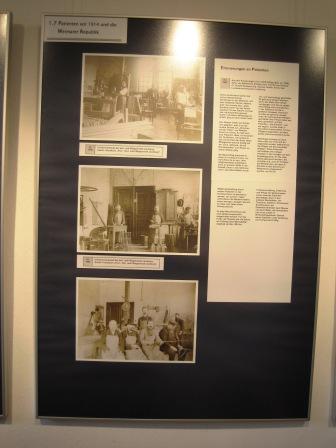 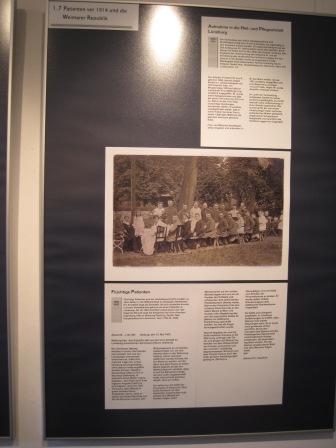 |
1.7 Patients before 1914 and the
Weimar Republic Presents two cases: one admission to the facility and the other a patient who eloped. |
|
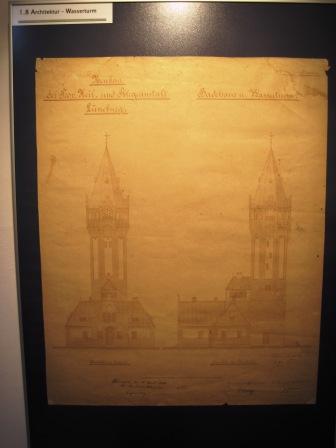 |
1.8 Architecture: Water tower [in the revision of the exhibit, this section appears to have been removed] |
|
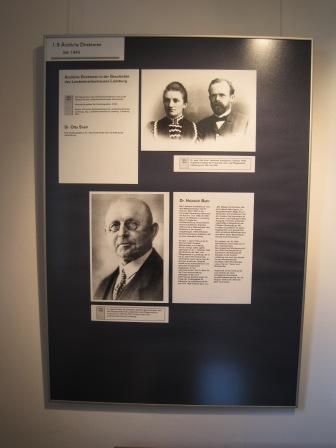 |
1.9. Medical directors until 1945 Provides biographies [in the revised exhibit, this panel is now numbered 1.8] |
|
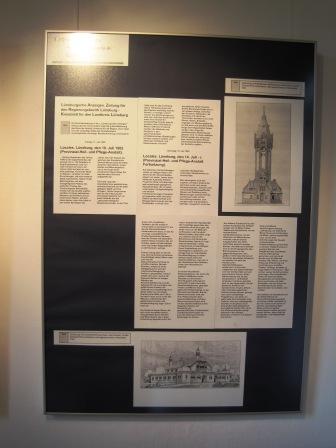 |
1.10 Reputation of psychiatry in
Lüneburg Presents newspaper articles noting the importance of the facility [in the revised exhibit, this panel is now numbered 1.9] |
|
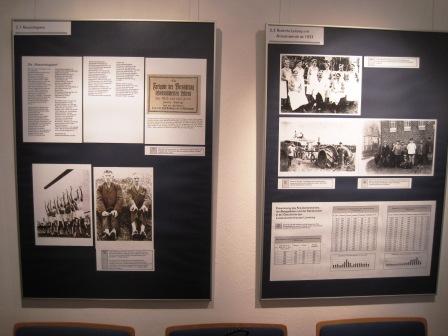 |
2.
"Third Reich" 2.1 Racial hygiene Addresses the foundations of social Darwinism and it manifestations in Germany [in the revised exhibit, this panel is now numbered 1.10] [2.1 in the revised exhibit, shown on the right, is entitled "Since 1939: Healing or Killing" and points to Hitler's "mercy decree" of 1939] 2.2 Medical directorship and operations since 1933 Presents a pictures of medical personnel and patients, and vital statistics |
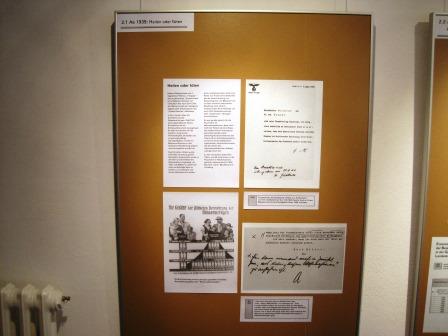 |
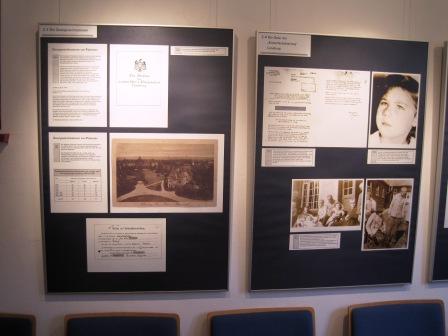 |
2.3 Compulsory sterilization Addresses how compulsory sterilization was carried out at the facility and presents statistics on the victims 2.4 Victims of the "special children's ward" in Lüneburg Presents a case of a murdered child for whom the administrative correspondence of the Reichsausschuss is shown, and the case of patients from the facilities at Rotenburg |
|
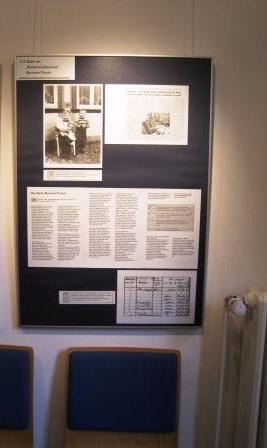 |
2.5 Victims of the "special
children's ward": Bernhard Filusch Presents a detailed history of this murdered child, as well as a newspaper article of a relative of another murdered child who had not known about the murder from a long time |
|
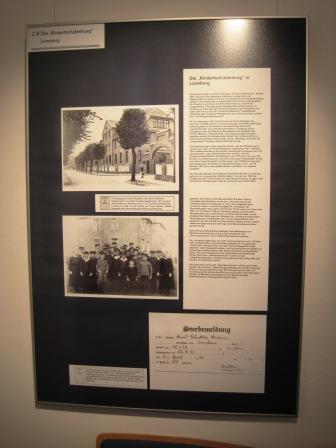 |
2.6 "The special children's ward" in
Lüneburg Presents information how the special children ward came into being and how it operated [in the revised exhibit, panel 2.6 presents the history of Heinz-Günter Schulze, who died in the special children's ward] |
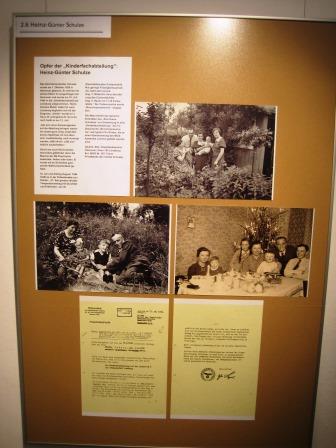 |
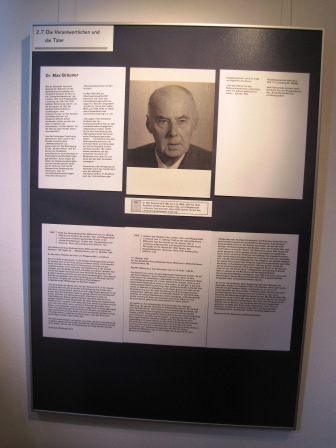 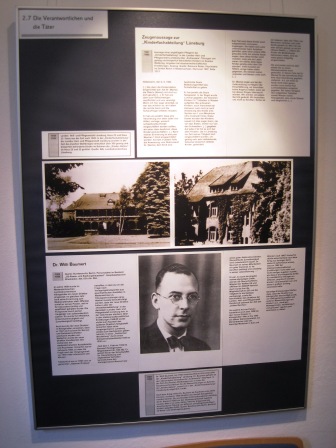 |
2.7 Those responsible and the
perpetrators Gives a portrait of the director, how the considered disabled children as "worthless human material," painted himself as opposed to "euthanasia," and took no responsibility for his deeds. A similar account is given from the physician heading the special children's ward, and a deposition of an nurse who worked in the ward is presented. |
|
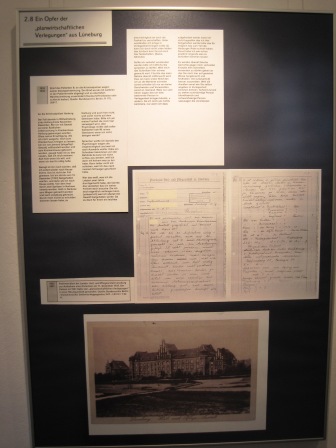 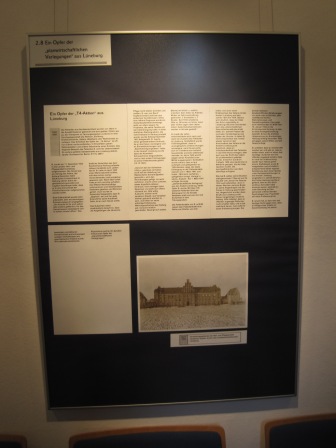 |
2.8 A victim of "administratively
planned transports" from Lüneburg Shows a letter of patient detailing his experiences in the facility before being sent to a T4 gassing facility, and the example of another such patient. |
|
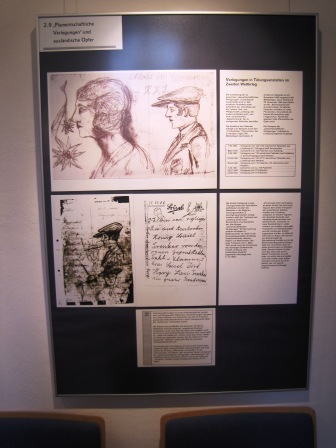 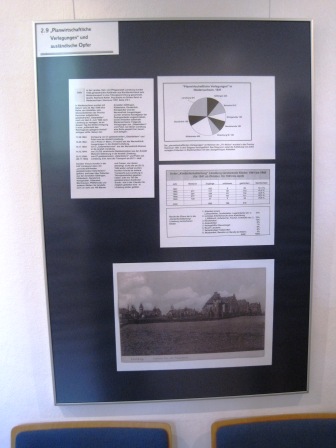 |
2.9 "Administratively planned
transports" and foreign victims Portrays the system of transports to other facilities and the murder of patients, including those who were forced laborers, as well as data on the victims of "children's euthanasia" [in the revised exhibit, this panel is now numbered 2.10, with the second section of the panel removed. The new panel 2.9 addresses the "T4"-victim Käte-Maria Spreen, who as a patient at Lüneburg was transferred to Herborn and murdered at Hadamar] |
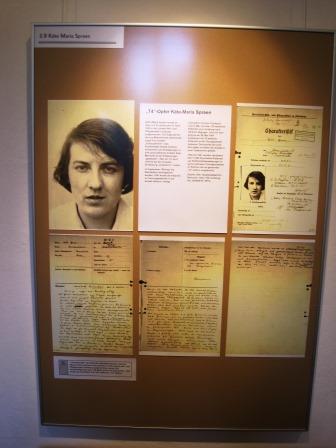 |
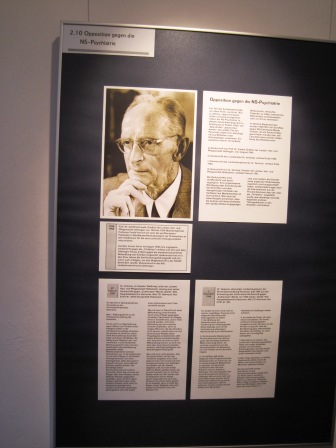 |
2.10 Opposition against Nazi
psychiatry Presents information about persons who opposed "euthanasia" and wrote memoranda to this effect, including one who also belonged to the NSDAP and welcomed compulsory sterilization [in the revised exhibit, this panel is now numbered 2.11] |
|
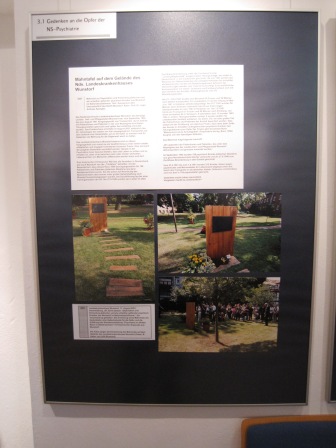 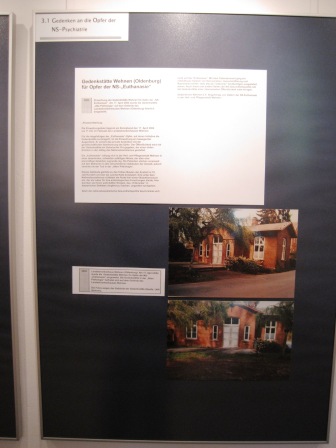 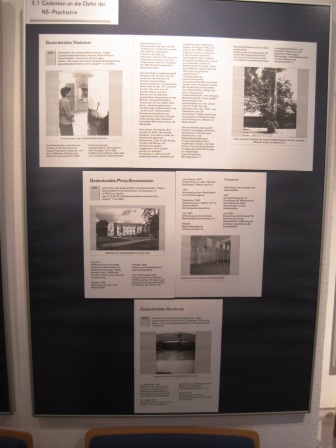 |
3.
Since 1945 3.1 Commemoration of the victims of Nazi psychiatry Presents other memorial sites |
|
 |
3.2 A new beginning since 1945 Presents information about the director and the state of the facility in the postwar period |
|
 |
3.3 Criminal prosecution since 1945 Presents information about the trial of major administrative officers and the verdict (not guilty), as well as considerations of the state attorney's office |
|
 |
3.4 Perpetrators and their deeds Addresses different levels of responsibility and culpability for the "euthanasia" crimes, as well as what people today can learn from studying those events |
|
 |
3.5 Research on Nazi psychiatry Provides information about publications on "euthanasia" crimes, and about the scholars in the field |
|
 |
4.1
Patient art - This part presents art by patients of the
facility 4.1 Karl Gustav Sievers |
|
 |
4.2 Art and culture with and for
patients |
|
 |
4.3 Patient art |
|
 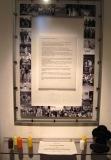 |
In addition, there is a board with
press articles on current issues (such a s the "right to die") and a
patient's corner, where patients present how and where they live on
site and ask the visitors to be mindful so that the crimes of the
past will not be repeated. In the revision of the exhibit, a memorial tree was created by students of cultural sciences at the local university. It offers visitors an opportunity to reflect and express their thoughts by attaching notes to the tree (see also Reiter 2011). |
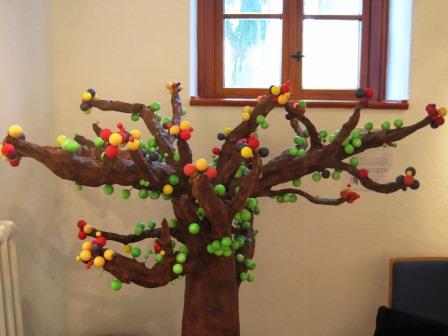 |
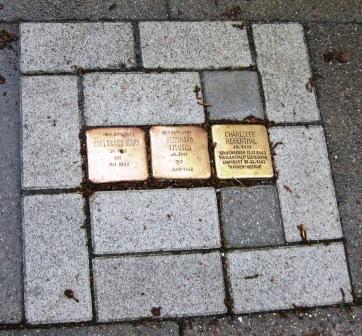 Source: author
Source: author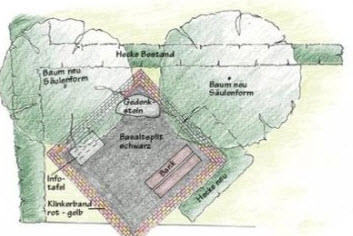 |
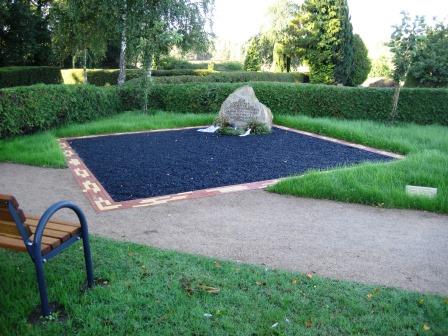 |
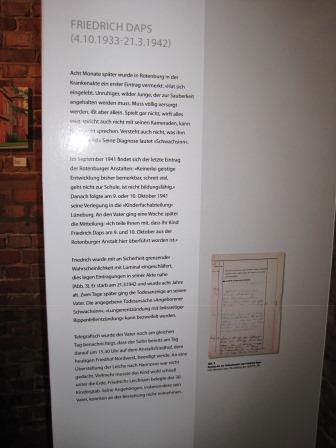 Source: author
Source: authorLiterature
Benzenhöfer, Udo. 2003. "Genese
und
Struktur der 'NS-Kinder- und Jugendlicheneuthanasie.'" Monatsschrift
für Kinderheilkunde 151: 1012-1019.
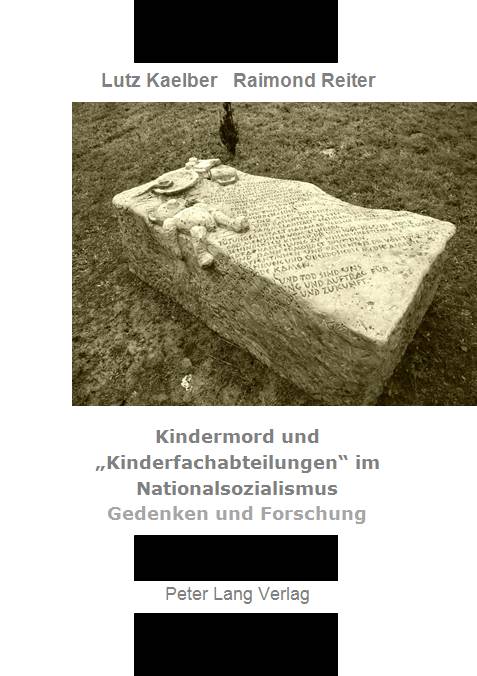 English table of contents
English table of contentsLotze, Jürgen. 2007. "Die Bildungs- und Gedenkstätte:
Sinn und Auftrag: Rede zur Eröffnung am 25. November 2004." Pp. 69-81 in Opfer der NS-Psychiatrie: Gedenken in
Niedersachsen und Bremen, edited by Raimond Reiter. Marburg:
Tectum Verlag.
Niedersächsisches Landeskrankenhaus Lüneburg, ed. 2001. 100 Jahre Niedersächsisches
Landeskrankenhaus Lüneburg. Lüneburg: Niedersächsisches
Landeskrankenhaus Lüneburg (esp. the chapter by R. Reiter and C. Alefeld).
———. 2005. "Der 'Reichsausschuß zur wissenschaftlichen Erfassung erb- und anlagebedingter schwerer Leiden': Die Ermordung minderjähriger Kranker im Nationalsozialismus 1939-1945." Master's Thesis in History, University of Berlin.
Vormbaum, Thomas. ed. 2005. "Euthanasie" vor Gericht: Die Anklageschrift des Generalstaatsanwalts beim OLG Frankfurt/M. gegen Dr. Werner Heyde u. a. vom 22. Mai 1962. Berlin: Berliner Wissenschafts-Verlag. Pp. 87-88.